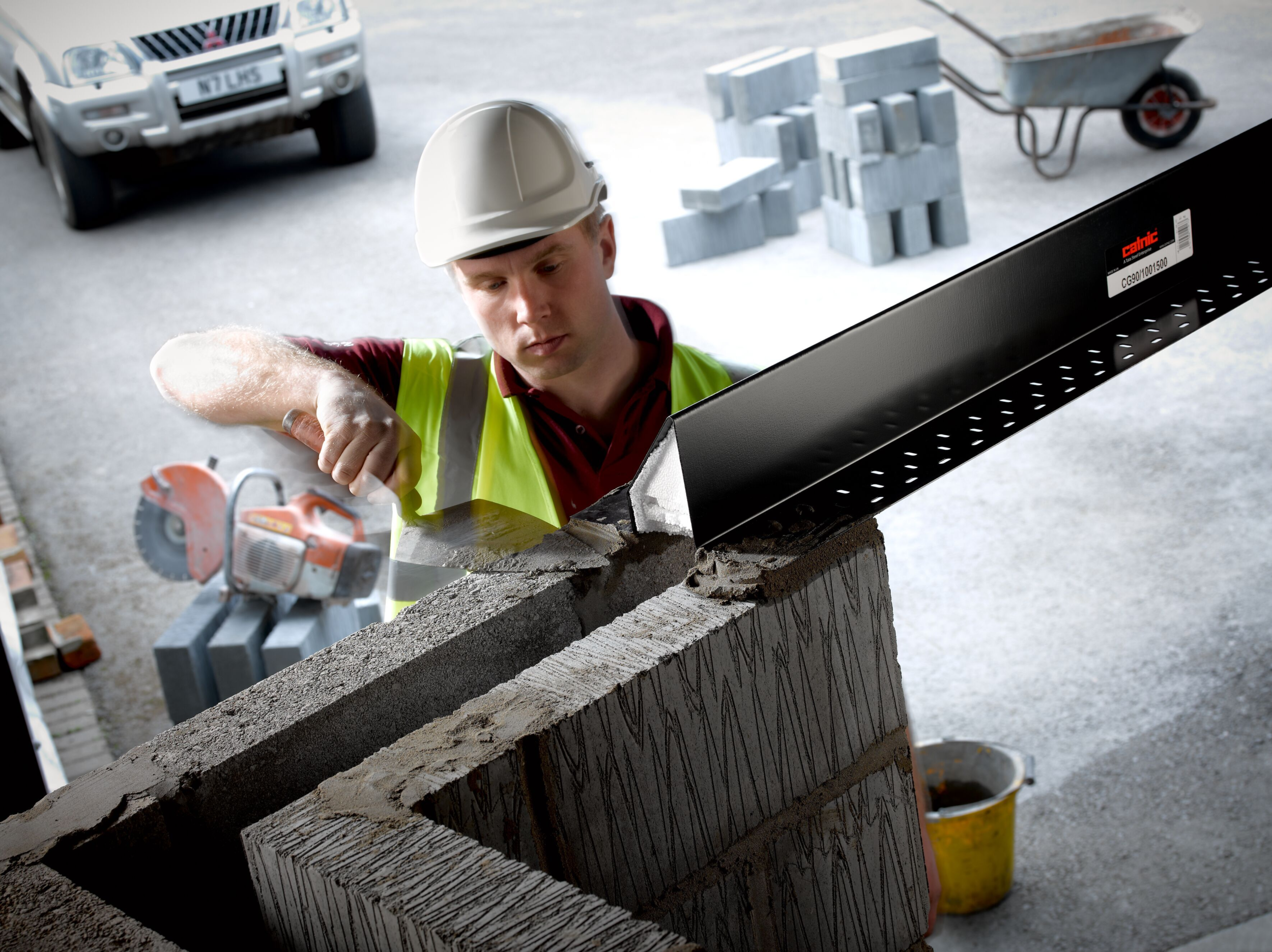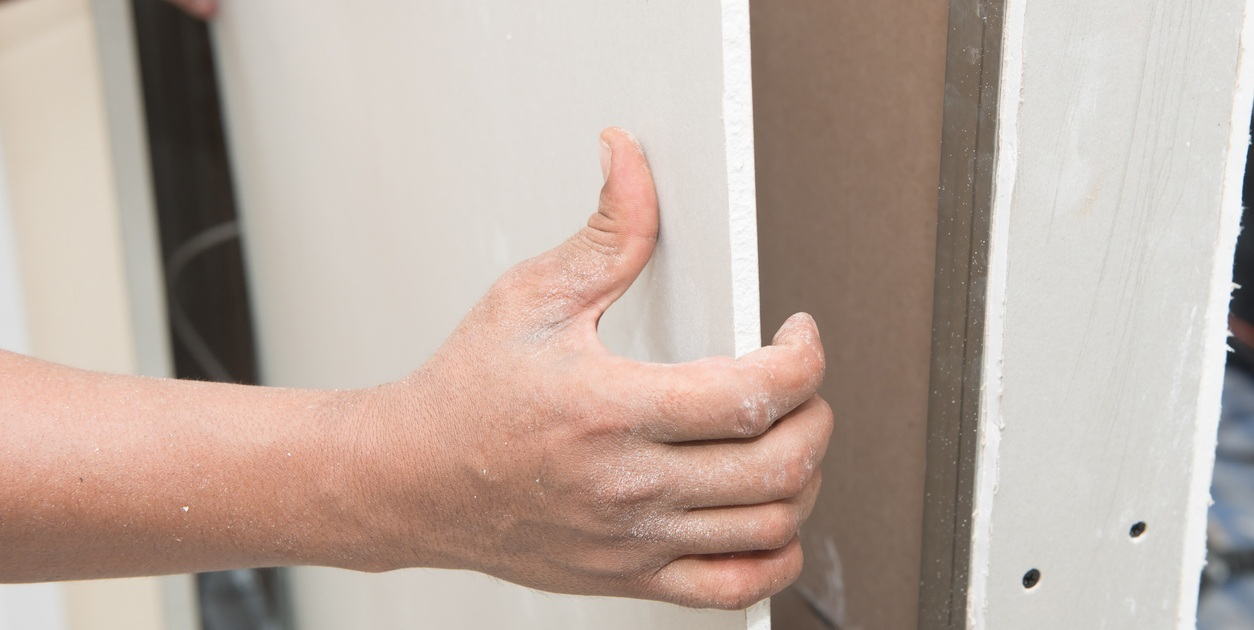As the famous Victorian writer John Ruskin said, “we require from buildings two kinds of goodness: first their doing their practical duty well: then that they be pleasing and graceful in doing it”.
Lintels can make a positive difference on both counts, providing vital structural support and enhancing the aesthetic appeal of buildings. However, you may well be wondering which is the best choice for your property.
Thankfully you can count on Catnic, as we take you through the characteristics and types of lintel used in this blog.
Understanding lintels
Lintels are structural elements designed to be positioned horizontally across building openings such as doors, windows, and other entrances. Extending beyond the width of such openings, they can bear various loads to provide a building’s structural integrity.
Mainly used for the supporting a variety of loads present in brick and masonry structures, lintels are available in various shapes and sizes. The best choice depends on factors such as the structural needs, contractor preferences, and desired appearance.
Types of lintels
There are five different lintel types on the market:
Steel lintels
Widely regarded as the one of the best materials for lintels , steel is highly durable, relatively lightweight and 100% recyclable . Easily formed to a variety of shapes , steel is a great choice for manufacturing light, medium and heavy duty lintels
The residential and commercial uses of steel lintels include:
- Support for openings in masonry cavity walls
- Floors and roofs loads support
- Cladding and facade support (particularly in timber frame buildings with brick and stone facades)
Concrete lintels
While steel lintels are often chosen for added structural support, a high-strength concrete lintel may have better load-bearing capacity over certain lengths. Concrete lintels are also relatively affordable and easy to use.
Concrete lintels may be used for the following purposes:
- Reinforcing masonry construction (particularly in structures with multiple openings or where extra support is needed)
- Limiting the risk of corrosion (particularly in coastal areas, as concrete lintels are less likely to rust and deteriorate when exposed to moisture and salt)
- As affordable support for low-rise buildings, garages, and extensions (where budgets are often limited)
Timber lintels
Timber lintels have traditionally been used in the construction of barns and mountain homes. However, alternative materials have proven increasingly popular due to their increased weight capacity and durability.
That said, timber lintels may still be a good choice for:
- Structural support in green oak framed buildings
- Historic building restoration (where historical integrity may be preserved)
- Applications where there’s minimal need for structural support (as with the construction of outbuildings, such as sheds, barns, and garages)
Brick lintels
Brick lintels may be a good choice for the support of lightweight loads, where the opening gap is less than one metre. In such instances, it’s common to use brick lintel types with small indentations, or frogs, for protection against shearing.
The uses of brick lintels include:
- Supporting low-rise buildings and small brick wall openings, where steel or concrete lintels aren’t required
- Maintaining the brickwork aesthetic of traditional or historic buildings
- Creating arches above openings
- renovation projects
Stone lintels
Commonly used in areas where there’s a good material supply, stone lintels can be customised in a range of shapes and sizes. However, the tensile quality means that these lintels can crack easily under pressure. They are also relatively expensive and difficult to transport due to their heavy weight.
Stone lintels are still used for the following purposes:
- Blending with the aesthetic of high-end and architecturally significant buildings
- Preserving structural integrity in the restoration or conservation of heritage buildings
- Supporting heavy load bearing (particularly in monumental and public buildings, where there’s a need for visual permanence, strength, and grandeur)
Thermally broken lintels
Like other varieties, thermally broken lintels are fitted to bear the weight above building openings. However, the unique “thermally broken” design effectively limits the transfer of heat between the outer and inner parts of the lintel. This means that thermally broken lintels are extremely energy efficient and offer exceedingly better thermal performance than standard steel and concrete alternatives.
Other benefits of thermally broken lintels include:
- Prevention of condensation issues associated with thermal bridging
- Improvement of overall thermal performance of the building
- Greater compliance with building regulations and energy efficiency standards
- Enhanced durability and corrosion resistance for long-term structural integrity
- Ease of installation
Choosing the right types of lintel
Choosing the right type of lintel can be a tricky task which is why, you can always get in touch with Catnic’s team of highly experienced and friendly engineers if you’re in any doubt as to the best choice of lintel. We look forward to chatting with you.
For more help on choosing a lintel, consult our article: Which lintel do I need? Help with choosing lintels.
More
-
![]()
- Plaster Bead & Mesh
- Guide
How to Fix an Angle Bead to Plasterboard
-
![]()
- Lintels
- Guide
Why thermally broken lintels are a game changer


